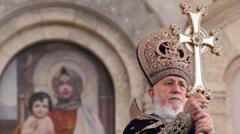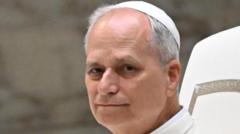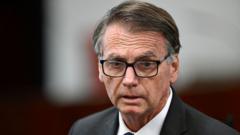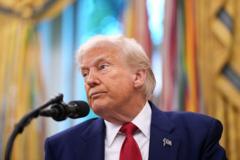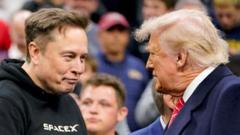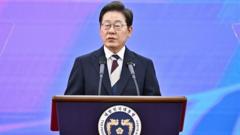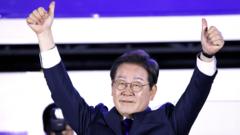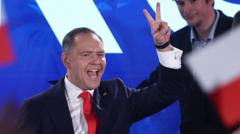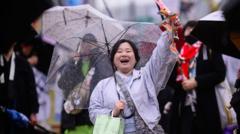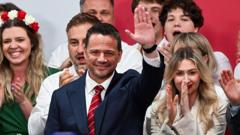On the second day of deliberations, the cardinals have yet to reach a consensus, with the election process impacted by diverse interests and evolving dynamics within the church.**
Papal Conclave Enters Second Day Amid Unprecedented Uncertainty**

Papal Conclave Enters Second Day Amid Unprecedented Uncertainty**
The Vatican conclave continues as cardinals strive to elect the next pope, requiring a two-thirds majority among the 133 electors.**
The Vatican conclave, tasked with selecting a successor to Pope Francis, has entered its second day, proceeding without a decision following the initial round of voting on Wednesday. The assembly of 133 cardinals reconvened this morning, tasked with the considerable responsibility of choosing a new leader for the world's 1.4 billion Roman Catholics. The innovative elements of this conclave include the largest and most diverse gathering of cardinals in recent history, resulting from the numerous appointments made by Francis during his tenure.
The papal election remains a highly secretive process, with voting conducted in the Sistine Chapel under extremely controlled conditions, including the prohibition of any electronic devices. The enduring challenge for the cardinals is achieving a two-thirds majority in their votes, a feat that has become increasingly intricate given the varied perspectives and backgrounds of the cardinals themselves.
The edict of the conclave is a tense atmosphere, filled with high stakes. Among the more prominent candidates are Cardinal Pietro Parolin from Italy and Cardinal Luis Antonio Tagle from the Philippines, reflective of the growing voice of the church in Asia. However, many experts underscore the considerable ideological divide within the college of cardinals—between those seeking to continue Francis' legacy of inclusivity and reform and those favoring a return to traditional conservatism.
Mandating a restart of voting every day, the process will involve four rounds of ballots until the decisive vote is secured. The signals from the Sistine Chapel's smoke, indicating either a dark cloud of disagreement or white approval, are closely monitored by the global populace eagerly awaiting news of the newly elected Pope.
The conclave has no official time limit; previous papal elections have varied drastically in duration, from mere days to several months in past centuries. Cardinal Timothy M. Dolan of New York voiced expectations that this conclave might take more time than usual due to the unfamiliarity amongst so many cardinals. Others, however, believe that an agreement can be reached swiftly as cardinals seek to converge on a well-known candidate.
As deliberations continue, many are left wondering: How long will the confirmation of the new head of the Catholic Church take? The votes are set to continue, with the next ballots expected later today, as the world watches closely, hoping to gain insight into the future direction of Catholic leadership in such uncertain times.
The papal election remains a highly secretive process, with voting conducted in the Sistine Chapel under extremely controlled conditions, including the prohibition of any electronic devices. The enduring challenge for the cardinals is achieving a two-thirds majority in their votes, a feat that has become increasingly intricate given the varied perspectives and backgrounds of the cardinals themselves.
The edict of the conclave is a tense atmosphere, filled with high stakes. Among the more prominent candidates are Cardinal Pietro Parolin from Italy and Cardinal Luis Antonio Tagle from the Philippines, reflective of the growing voice of the church in Asia. However, many experts underscore the considerable ideological divide within the college of cardinals—between those seeking to continue Francis' legacy of inclusivity and reform and those favoring a return to traditional conservatism.
Mandating a restart of voting every day, the process will involve four rounds of ballots until the decisive vote is secured. The signals from the Sistine Chapel's smoke, indicating either a dark cloud of disagreement or white approval, are closely monitored by the global populace eagerly awaiting news of the newly elected Pope.
The conclave has no official time limit; previous papal elections have varied drastically in duration, from mere days to several months in past centuries. Cardinal Timothy M. Dolan of New York voiced expectations that this conclave might take more time than usual due to the unfamiliarity amongst so many cardinals. Others, however, believe that an agreement can be reached swiftly as cardinals seek to converge on a well-known candidate.
As deliberations continue, many are left wondering: How long will the confirmation of the new head of the Catholic Church take? The votes are set to continue, with the next ballots expected later today, as the world watches closely, hoping to gain insight into the future direction of Catholic leadership in such uncertain times.


